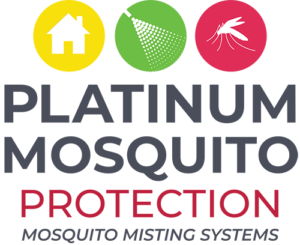Learn about the history of the Zika virus
Quick: How old do you think Zika is? If you said only a few years, you’re way off. Like most people, you probably only recently heard about the virus, so you may be surprised to know that it dates back almost 70 years. Here’s a brief timeline so you can get a better understanding of Zika:
1947-48
In 1947, a new virus is discovered in a rhesus monkey in the Zika forest of Uganda. The next year, the virus is recovered from a mosquito in the same place and then given the name Zika.
1952
For the first time, Zika is found in people. Cases are identified in Uganda and Tanzania.
1964
While working on the virus, a researcher in Uganda is infected, which confirms that Zika causes human disease. In Eastern Nigeria, during a jaundice outbreak, three people contract Zika.
1960s
As Zika continues to spread, more human cases are confirmed, though there are no reports of any deaths or hospitalizations. Zika begins to be mapped as it moves to western Africa and Asia.
1969-1983
Zika is found in mosquitos in India, Pakistan, Malaysia, and Indonesia.
2007
Up until now, there had only been 14 known worldwide cases of Zika affecting humans. But in 2007, an outbreak occurs in the Pacific Island of Yap in the Federated States of Micronesia, and an estimated 73 percent of residents are infected.
2008
A U.S. scientist working in Senegal contracts Zika. When he returns home to Colorado, he infects his wife, which is the first documented instance of sexual transmission of a disease primarily transmitted by insects.
2013-14A
Zika outbreak takes place in four Pacific islands: New Caledonia, French Polynesia, Easter Island, and the Cook Islands. When infections are studied in French Polynesia, researchers discover a possible link between Zika and congenital malformations, along with neurological and autoimmune issues. Two babies are found to have Zika, and the infection seems to have come from transplacental transmission during delivery.
2015
Brazil notifies the World Health Organization (WHO) of illness in some northeastern states that are characterized by skin rashes. From February to April, about 7,000 mild cases are reported. Zika isn’t suspected or tested for.
In May, it is confirmed that Zika is in Brazil. WHO releases an alert and recommends that countries attempt to reduce the transmission of the virus through detection, management, and community engagement strategies.
Cabo Verde, an island off the northwest coast of Africa, confirms a Zika outbreak in October. In the same month, Colombia finds 156 cases in 13 municipalities. Brazil reports a high number of newborns with microcephaly.
In November, several more countries confirm cases of Zika, including Mexico, Guatemala, Paraguay, and El Salvador. On November 6, the virus is discussed in WHO’s Weekly Epidemiological Report. Five days later, as cases of microcephaly continue to rise, Brazil declares a national public health emergency. On November 28, Brazil reports that two adults and a newborn have died due to Zika.
On December 22, cases of Zika appear in Puerto Rico, Panama, Honduras, and other countries. WHO issues an alert for the Americas connecting Zika with the neurological syndrome and congenital malformations.
2016
Zika continues to spread throughout the world, including more places in North and South America, Africa, and Asia. In August, several countries begin working on a vaccine. In October, WHO launches the Zika Virus Research Agenda, which is used to identify important areas of research in order to limit the impact of Zika.
Hopefully, we will start to see a dramatic decline in the number of Zika cases in 2017. One of the best ways to keep you and your family safe from the virus is to repel and limit the mosquitos in your yard. You can do this with a misting system from Platinum Mosquito Protection. It’s completely automated, so once it’s installed, all you have to do is turn it on and it will do the rest. For more information or a free onsite consultation, you can contact us through our online form.

